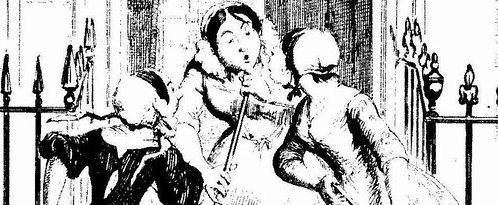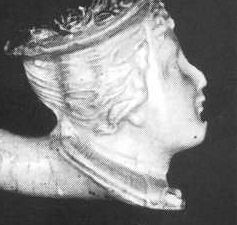The match factory women
The Bryant and May "match girls" strike of 1888 is one of those carefully selected events from which women pop into mainstream history; being a a nice balance for the suffragettes certainly helps.
But another talk today put flesh on the bones in more ways than one, suggesting that the strikers were considerably older than the 12 to 15 that is generally suggested. Certainly this picture of the elected organisers doesn't suggest young teenagers.
The talk covered the life of Sarah Chapman, one of these organisers, and the highest-paid worker involved in the strike (40s in the week before it started - CORRECTION, this should be 40 pence - see comments)). She is listed as a "booker", although apparently no one knows now exactly what that meant.
A huge amount of research has managed to almost entirely map out her life, and those of her relatives. She remained active in the trade union movement until 1891, when at the age of 29 she married. Yet despite probably two decades of working in a job that must have been in today's terms at least semi-skilled, no occupation is given on her marriage certificate. (Her husband, Charles Harry Dearman, is listed as a cabinetmaker.)
It's a good example of how so many women who were nothing of the sort end up listed as "housewife".
An excellent account, and some 1,200 documents relating to the strike, can be found at the TUC library.







3 Comments:
No, sorry, I probably should have spelt that out, it was 40 shillings. And the question on matchbooks was asked at the conference and the answer was no.
It seems likely that she must have kept tallies of everyone's work, matching it with the factory records to ensure everyone got paid the right amount (many were pieceworkers) or something like that,; the comment was made she was "certainly" literate.
And of course even before 'the housewife' was invented, women were defined by their marital status; in the legal records, women are 'spinster', 'wife of', 'widow', where men are 'butcher', 'yeoman', 'gentleman' (very, very occasionally, a woman is given an occupational tag)... a real pain if you want some idea of the social status or background of the unmarried women in particular. Also, you sometimes come across settings like alehouses (which were often run by women) where you have some reason to believe that the person actually in charge was a married woman but it will usually be described as being her husband's... certainly in official records, say for tax purposes.
Sharon
Sharon
Thanks Ronnie for the correction; I'm sure you are right.
The speaker on Saturday definitely said 40 shillings, I remember thinking it seemed quite high, but your calculations confirm she must have meant to say 40 pence, since that squares with the TUC material.
I have to confess shamefacedly that I've never got on top of the whole pre-decimal currency maths business, even though I do handling of old British coins in the BM - I just refer to my crib sheet if anyone asks!
Post a Comment
<< Home